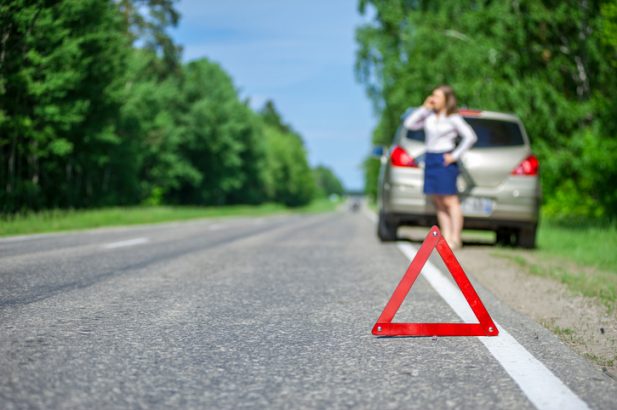Roadside Emergencies – Be Prepared And React Safely

It could be a flat tire, an electrical failure, or just an empty fuel tank – at some point, most people will experience a mechanical problem while driving. But are you prepared to react safely in the event your vehicle becomes disabled while driving?
If your vehicle has become unable or unsafe to continue driving, the first and most important thing you can do is pull as far off the travelled portion of the road as you are able. Remember to activate your hazard lights immediately, so that you are visible to other drivers, regardless of the time of day or night.
If you cannot remove your vehicle from an active lane of travel, try to make your vehicle as visible to other drivers as possible: keep your headlights on and activate your hazard lights. Exit the vehicle only if and when it is safe to do so, and only in situations where you can safely move well away from active traffic. Otherwise, safety experts suggest you remain in the protection of your vehicle, with your seatbelt fastened.
Once you are stopped, call for assistance immediately and use whatever means are available to increase visibility of your vehicle to other drivers. Failure to act quickly to ensure you have done everything you can to make your vehicle visible to other drivers and to move it as far from active traffic as possible could result in civil or other liability, in the event of an accident.
Roadside emergency kits are readily available at most automotive retailers. Such kits typically include reflective safety triangles, a flashlight, an emergency blanket, basic tools, booster cables, first aid supplies, and neon “S.O.S.” or “Call Police” signs. No one wants to think about mechanical breakdowns, but they do happen and having a roadside emergency kit available could be a life saver.
Oatley Vigmond is Ontario’s Personal Injury Law Firm. If you or someone you know has been injured, we may be able to help.
Written By

Adam Little earned his undergraduate degree from the University of Toronto in 1996. He graduated from Queen’s University Faculty of Law in 2000 and was called to the bar in 2002. Adam was practicising on Bay Street for a leading Toronto litigation firm that represented doctors in medical malpractice claims when he realized that helping people through personal injury litigation was what he wanted to do. “I wanted to work for the best,” he said. A partner at Oatley Vigmond had written the best-known book available about addressing jury trials, which Adam had read and admired. He wrote to the partner, went through an intense interview process and became a partner at the firm in 2005.
